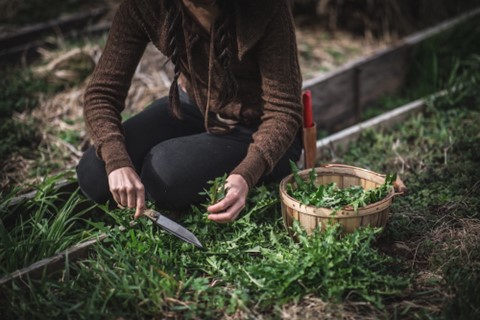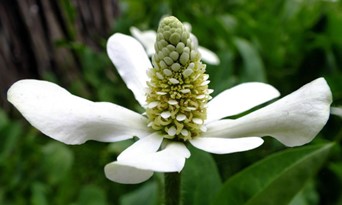What is Sustainable Medicine?
For as long as I can remember I have loved the outdoors and have felt passionately towards Mother Earth. Several summers ago, I went vegan and that was the peak of my dedication. However, since reverting to an omnivorous diet I realized that I could be doing a lot more on my part to make up for leaving behind the plant-based diet. Here at UNM (University of New Mexico), I have had the opportunity to learn more about environmental threats, as well as what we can do on our end to improve the health of our plant alongside our own. Sustainable medicine is the basis of a healthy lifestyle and a thriving planet!
Sustainable healthcare upholds that our health – plus the health of our environment – are essentially connected and helps to promote a system that affordably delivers high-quality care while minimizing the environmental impact. The practice of sustainable medicine also aims to endorse the long-term goal of maximizing health by emphasizing nutrition, physical activity, personal fulfillment, and spiritual balance. This system strays away from ‘quick fixes’ that simply suppress the symptoms and instead focuses on nurturing the patients from the core.
It is crucial that the carbon footprint is kept to a minimum when delivering care and treatment to patients. Minimizing the resources and the emissions required to distribute high quality healthcare; using sustainable products and materials and/or reusing equipment where clinically appropriate. It is important to keep in mind that this minimization must not compromise the quality of care or health outcomes experienced by the patient.
As the years progress, population growth, unhealthy lifestyle trends, increases in chronic disease, and aging populations drive the increase in healthcare demands and resource consumption. The need for sustainable healthcare becomes more vital as climate change intensifies alongside the anticipated health impacts.
Herbalism: Curanderismo & Homeopathy
Herbalism, the practice of utilizing plants and herbs as medicine, can be the perfect gateway to sustainable medicine. When we connect sustainability to herbalism, we can begin to be mindful of the significance that our decisions carry, based on our responsibility to the health of our wider ecosystems. Talia Moore writes that “when we learn from the natural resource that is the local plants around us, we can use them to provide relief, a sense of autonomy over our healing, and a space for play and exploration in the kitchen.”
The University of New Mexico offers some great natural medicine related courses! Firstly, I want to highlight the course Thriving with Homeopathy: A Practical Guide, taught by Dr. Angelina Koch. This is an online course that aims to aid students in understanding homeopathic applications and doctrines. The curriculum essentially allows students to examine the interrelationship between the mind, body, and soul. Dr. Koch gives students a space to explore natural homeopathic remedies applicable to various circumstances. Secondly, the extensive Curanderismoprogram and curriculum, led by Dr. Eliseo “Cheo” Torres, teaches students the history of traditional Hispanic/Latino medicine. “People want to know about the medicine of their culture, of their grandmothers or grandfathers. We offer something unique in that we work with some of the top healers around the country and around the world in this class” (Torres 2021). Many of the topics examined in this course included remedies that I was already quite familiar with, thanks to my Hispanic upbringing!
Medicine: Western vs Natural
As I mentioned earlier, sustainable medicine aims to endorse the long-term vision of optimal health by emphasizing nutrition, physical activity, personal fulfillment, and spiritual balance. This natural route to healing focuses on prevention and treating the root of the issue/ailment rather than simply suppressing symptoms, which tends to be the goal of Western medicine (I.e., common overuse of antibiotics and pain medications). Generally speaking, Western medicine is more expensive and resource intensive than natural medicine (I.e., drug manufacturing, transportation, insurance issues, etc.).
How do I get started?
It is crucial we educate ourselves before jumping into the practice of natural healing. Remember the importance of sourcing healing herbs locally and supporting local herbalists to reinforce the element of community relationships within sustainable medicine. Be sure to give back to the plant world by researching the area’s endangered medicinal plants and growing more of them to protect these vital ecosystems! Holistically speaking, cultivating a practice of gratitude with plants and the natural world reciprocates a cycle of nourishment.
Considering a plant-based diet is another excellent way to incorporate sustainable medicine into your life. This is because food is medicine, as it is our fuel. A plant-based diet helps to lower the risk of cardiovascular disease, type 2 diabetes, and other preventable medical issues. This shift to a greener diet not only benefits our bodies, but especially our home. Research shows that plant-based diets encourage significant reduction of greenhouse gas emissions in comparison to non-plant-based diets that are extremely common in most industrialized countries.
Make a difference with your medicine by opting for sustainable medicinal alternative whenever possible! Some examples of plants – found here in the Southwest – that can replace your over-the-counter pain medication:
Osha: The root is consumed primarily as a tea or tincture to enhance immunity to colds, cases of flu, and viruses. The Osha plant can also relieve digestion issues, body pains, and lung diseases.
Ashwagandha: The root and leaves contain nutrients that can be extracted and/or turned into a powder. Ashwagandha has been proven to reduce anxiety and stress levels, improve sleep and brain function, build hormonal strength and may reduce blood sugar levels and inflammation.
Yerba Mansa: It has antibacterial properties that allow the root to disinfect and treat wounds, sores and ulcers. Yerba Mansa can be consumed as tea, powder, capsule or extract to soothe and shrink inflamed tissues.
-Posted by Isa







